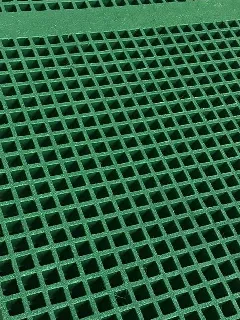loading...
- No. 9, Xingyuan South Street, Dongwaihuan Road, Zaoqiang County, Hengshui, Hebei, China
- admin@zjcomposites.com
- +86 15097380338
- Welcome to visit our website!
glass fiber reinforced polymer bars
The Advantages of Glass Fiber Reinforced Polymer Bars
In recent years, an increasing number of industries have turned to advanced materials for improved performance and durability, and one of the standout materials in this realm is glass fiber reinforced polymer (GFRP) bars. GFRP bars are composite materials made by combining glass fibers with a polymer matrix, resulting in a structure that boasts unique advantages over traditional materials like steel and concrete. This article will explore the benefits, applications, and future potential of GFRP bars.
Understanding GFRP Bars
GFRP bars are manufactured by embedding glass fibers, which offer high tensile strength, into a polymer resin. The resulting composite material is lightweight, corrosion-resistant, and possesses excellent mechanical properties. Unlike steel reinforcement bars (rebar), which can corrode and weaken over time, GFRP bars maintain their integrity even in harsh environments, making them a sustainable choice for various construction applications.
Key Advantages of GFRP Bars
1. Corrosion Resistance One of the primary benefits of GFRP bars is their resistance to corrosion. Unlike steel, which can deteriorate when exposed to moisture and harsh chemicals, GFRP bars do not rust. This property extends the lifespan of structures, particularly in coastal areas, chemical plants, and locations where de-icing salts are used.
2. Lightweight GFRP bars are significantly lighter than traditional steel rebar. This characteristic not only makes them easier to handle and transport but also reduces the overall weight of structures. As a result, engineering designs can be optimized, allowing for lighter foundations and reduced construction costs.
3. High Strength-to-Weight Ratio Despite their lightweight nature, GFRP bars provide exceptional tensile strength. This high strength-to-weight ratio means that they can perform effectively under significant loads without compromising structural integrity. Consequently, GFRP bars are ideal for applications where high strength is required without additional weight.
4. Non-Magnetic and Non-Electrical Conductivity GFRP bars are non-magnetic and do not conduct electricity. This characteristic is particularly advantageous in applications such as the construction of bridges or tunnels where electromagnetic interference could be problematic, as well as in electrical substations and laboratories where electrical conductivity must be minimized.
glass fiber reinforced polymer bars

5. Environmental Benefits GFRP bars are considered more environmentally friendly compared to their steel counterparts. Their long lifespan reduces the need for frequent replacements, leading to lower resource consumption and waste generation. Furthermore, many GFRP products can be recycled at the end of their life cycle, contributing to a circular economy.
Applications of GFRP Bars
The unique properties of GFRP bars allow them to be utilized in a wide range of applications. In the construction industry, they are commonly used for reinforcing concrete structures such as bridges, parking garages, and buildings. Their corrosion resistance is particularly beneficial for infrastructure exposed to de-icing salts or marine environments.
GFRP bars are also gaining traction in the field of tunneling and geotechnical engineering, where their lightweight properties facilitate easier handling and installation. Additionally, they are increasingly being used in agricultural applications for reinforcing greenhouses and other structures that are subject to environmental stressors.
Future Potential of GFRP Bars
As demand for durable and sustainable materials increases, the future of GFRP bars looks promising. Ongoing research into enhancing their properties, such as improving resin formulations and optimizing fiber layouts, is likely to drive further innovation in their applications.
Moreover, as building codes increasingly emphasize sustainability and resilience to climate change, GFRP technology may see broader adoption. Builders and engineers are encouraged to consider GFRP bars not just as an alternative to traditional materials, but as a crucial component of modern engineering design that meets the demands of the future.
Conclusion
Glass fiber reinforced polymer bars represent a significant advancement in materials science, combining the benefits of high strength, lightweight properties, and exceptional resistance to environmental factors. Their versatility allows for a wide range of applications, while their eco-friendly characteristics align with the growing trend toward sustainable building practices. As the construction and engineering fields evolve, GFRP bars are poised to become a fundamental material choice, enhancing the durability and longevity of structures worldwide.
-
Why Choose a Galvanized Water Tank for Your Storage NeedsNewsMay.21,2025
-
The Strength and Durability of FRP GratingNewsMay.21,2025
-
The Importance of Water Treatment Systems for Clean and Safe WaterNewsMay.21,2025
-
The Advantages of FRP Rebar for Construction ProjectsNewsMay.21,2025
-
Say Goodbye to Hard Water with a Reliable Water SoftenerNewsMay.21,2025
-
Maximize Your Water Storage with a Sectional Water TankNewsMay.21,2025
-
The Power of Filter VesselsNewsMay.19,2025
